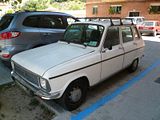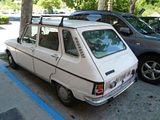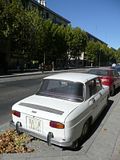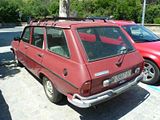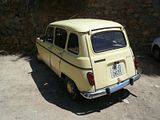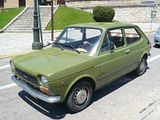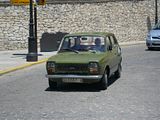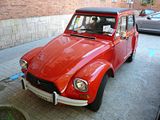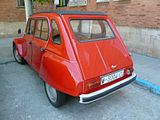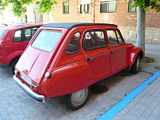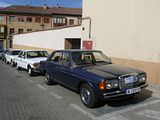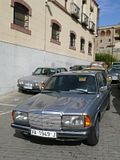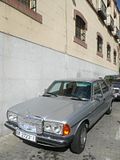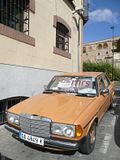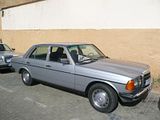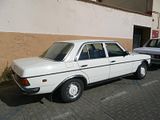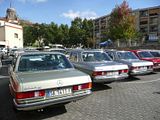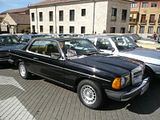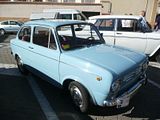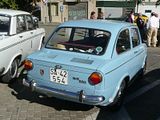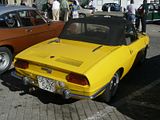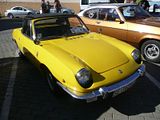Like many old towns in Spain, Salamanca comprises narrow streets that were created before the car had been thought of, and although locals do thread their vehicles through what look like improbable gaps, prudence suggested that even with a relatively small rental car such as the one with which Hertz had motorised me on my recent visit, it would be far better to park up on the outskirts of the town and to walk the last few hundred meters. I knew a good target location, just along from the Motor Museum which I had visited on my last trip, and was delighted to find that there was once again space to park there, and at no cost. Walking around the corner from this location brings you to a square right outside the museum, and this was the first point where I needed to reach for my camera.
MERCEDES-BENZ W123 CLUB of ESPANA
My visit appeared to coincide with the 2011 meeting of the Spanish W123 Club, and I would estimate that there were around 40 of the classic W123 models parked up in the square outside the Salamanca motor museum. The majority of them were regular saloons, but there were a few coupes, and there was one example of the “T” model estate car and a long wheelbase car. Spanish cars keep the same licence plate for life, and these were from the era when the first letters denoted the province where the car was registered. Although many were local with SA (Salamanca) or SG (Segovia) plates, others were from further afield.
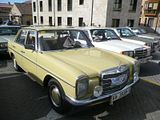

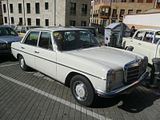
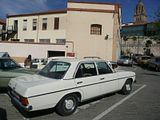
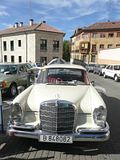
THE SECOND ASSEMBLY
Returning to the area some hours later, to collect my car, I found that almost all the Mercedes had gone and a second grouping of cars was occupying some of the same space. This seemed to be a more generalised collection of cars, each of which bore a plaque proclaiming participation in an outing between 2 of Spain’s car museums, ending in Salamanca. I only took pictures of the more notable vehicles among this collection.
This Seat 1500 is representative of the car that was popular as a Spanish taxi in the 1960s and 1970s. Based on the Fiat 1800/2100, the Spanish cars had much smaller engines, and whilst roomy were unlikely to be particularly brisk. You do still these cars on the roads occasionally.
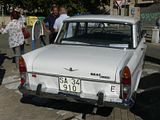
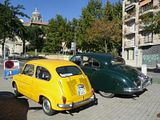

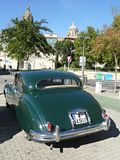
A PREVIOUS VISIT
Last time I was in Salamanca, back in June, the same square was marked out for a meeting of the Seat 800 Club of Spain. These cars were only produced for the domestic market, and were based on the popular Seat 600, but with a longer wheelbase and 4 doors. They are a rare sight nowadays. Only a couple of them had parked up at the time I was there.
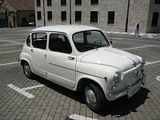
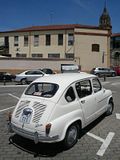
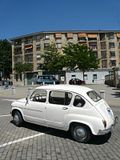
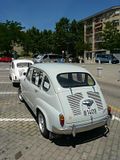
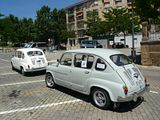
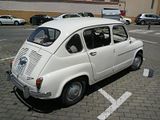
ON THE STREETS
Scrappage schemes have wiped out many of the older vehicles from the roads if Europe, but you do not have to look too hard in Spain to find cars of the sort that have long since disappeared from British, and for that matter French, German and Italian roads. I came across these cars as I was out and about exploring some these lovely Castillian towns.
The Renault R6 truly is a rare sighting these days. This one seem to have the grille and headlights from the later facelifted model, but the rear lights from the earlier car. I guess that keeping cars like this on the road is all about sourcing whatever parts you can find!
